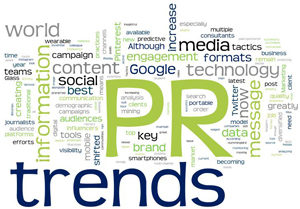Lead generation has eclipsed the importance of brand building in B2B. It’s time to reassemble all our marketing superpowers to deliver on revenue-based metrics.
By Megan Golden
Anybody who’s studied or worked in marketing knows that the choice to buy something is influenced by many different factors – and many different kinds of marketing activity. Brand equity and product awareness combine with more immediate, motivating marketing messages. A buyer’s conscious consideration of options is intertwined with instinctive responses shaped by emotions that are sometimes obvious, but sometimes very subtle. It’s complicated enough to unpick the roles of different factors when somebody picks up an FMCG product in a supermarket – but it’s far more complicated still when B2B decision-makers choose a solution or supplier.
In B2B marketing, long buying cycles and complex buying committees bring together different perspectives, priorities and levels of product understanding. And they mean marketers must flex a range of different skills or powers, in order to influence choices in the way they want.
We’re used to thinking of these powers as being deployed at different points in the marketing funnel: brand awareness prepares the ground for demand generation from increasingly informed prospects, which then gives way to the crucial business of generating leads and working with sales to close deals and increase customer value.
The challenge B2B marketers have always faced is aligning and balancing these different forms of activity without one eclipsing, overshadowing, and potentially even undermining the rest. It doesn’t help that, as different forms of activity become more specialist, they fall into the remit of different teams with different skillsets, and different metrics. Specialist marketing teams end up owning different parts of the funnel. Like a disbanded team of superheroes, they’re each capable of great things — but they’re capable of so much more when assembled and aligned in the right way.
How digital metrics penalised B2B brand marketing
The dangers of splitting up different forms of marketing are most apparent when you consider brand awareness and lead generation: two activities that are traditionally anchored to different ends of the marketing funnel. They are planned, executed and measured according to very different agendas. However, it’s becoming increasingly clear that treating these two marketing superpowers in isolation is compromising both of them.
The most obviously compromised superpower of the two is the ability to build brands: differentiating and positioning them in a meaningful way, and building relevant awareness at scale. Brand is the area of B2B that has fallen foul of digital marketing’s take on the Wanamaker principle: the idea, which is usually attributed to the department store pioneer John Wanamaker, that “half the money I spend on advertising is wasted; the trouble is, I don’t know which half.”
The engagement metrics that digital marketing generates in the form of clicks, shares and likes have provided a misleading answer to Wanamaker’s dilemma. It’s easy to assume that the marketing which generates less of a digital footprint in this way is the bit that isn’t pulling its weight. However, awareness levels and perceptions of a brand don’t translate as neatly into clicks as marketing activity with stronger calls to action, further down the funnel. As businesses have demanded evidence of ROI, it’s been easy to assume that the less easily measured areas of marketing are those adding less value. As a result, attention has shifted away from brand building – and starved it of investment.
Instead, businesses have focused on lead generation. After all, lead gen is all about measurable results – and in theory those results should be directly linked to customer acquisition and revenue.







Comment
No comments found.